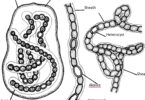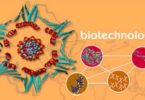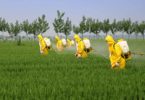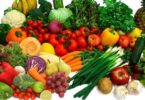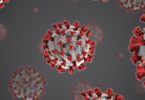Food chain quiz multiple choice questions answers:
Food chains are met with only in the
(a) Sea
(b) Cities
(c) Forests
(d) In all the places
The herbivores are also called
(a) Primary consumers
(b) Secondary consumers
(c) Tertiary consumers
The order of organisms in an aquatic food chain is
(a) Bacteria > Seal > Diatom > Fish > Crustacea
(b) Crustacea > Seal > Fish > Polar Bear > Diatom
(c) Polar Bear > Diatom > Seal > Crustacea
(d) Diatom > Crustacea > Fish > Seal > Bacteria
In a food chain, the total amount of living material is depicted by
(a) Pyramid of biomass
(b) Pyramid of energy
(c) Pyramid of number
(d) Trophic levels
Ecosystem creates
(a) Food chain
(b) Food web
Which of the food chains directly depends on solar radiation?
(a) Predator
(b) Grazing
(c) Detritus
Related: Capacitance Physics Quiz
A plant being eaten by a herbivorous, which in turn is eaten by a carnivorous, makes
(a) Food chain
(b) Food web
(c) Omnivorous
(d) Interdependent
In a food chain of grassland ecosystem, the top consumers are
(a) Carnivores
(b) Herbivores
(c) Either carnivores or herbivores
(d) Bacteria
A food chain starts with
(a) Nitrogen-fixing organisms
(b) Photosynthesis
(c) Respiration
(d) Decomposers
In the food web, hyaenas and vultures are
(a) Primary consumers
(b) Predators
(c) Scavengers
(d) Decomposers
Each successive trophic level has:
(a) Increased total energy
(b) Less total energy content
(c) More total energy content
(d) Non-estimated energy content
Related: Quiz Questions on Education
Which of the following food chains may not be directly dependent upon solar energy?
(a) Grazing
(b) Detritus
(c) Soaking
(d) Depleting
In a food chain, the total amount of living material is depicted by
(a) Pyramid of energy
(b) Pyramid of numbers
(c) Pyramid of biomass
In a food chain, herbivores are
(a) Primary producers
(b) Primary consumers
(c) Secondary consumers
(d) Decomposers
In an ecosystem, there are more prey than predators. This relationship is called.
(a) Food webs
(b) Predator-prey relationship
(c) Pyramid of number
(d) Succession
The food chain consists of
(a) Producer, consumer and decomposer
(b) Producer, carnivore and decomposer
(c) Producer and primary consumer
(d) Producer, herbivore and carnivore
Related: USA quiz
The large carnivores or the tertiary consumers exist at which level of the food chain __
(a) First
(b) Second
(c) Third
(d) Fourth
The ecosystem has two components
(a) Plants and animals
(b) Weeds and trees
(c) Biotic and abiotic
(d) Frog and men
In a food chain, which of the following produces the most significant amount
(a) Producers
(b) Decomposers
(c) Tertiary consumers
(d) Primary consumers
The second-order consumer in a food chain is
(a) Cattle
(b) Deer
(c) Tiger
(d) Goat
In a food chain, the lion is a
(a) Secondary consumer
(b) Primary consumer
(c) Tertiary consumer
(d) Secondary producer
Related: Respiratory system quiz with answers
The food chain in which microbes split energy-rich compounds of the producer community is
(a) Parasitic food chain
(b) Detritus food chain
(c) Predators food chain
(d) Producer food chain
We refer to the following as the food chain
(a) Large number of animals near a source of food
(b) Transfer of food energy from the green plants through a series of consumer organisms
(c) Large number of human beings forming a human chain near a source of food
Which is the correct sequence in the food chain in a grassland?
(a) Grass > wolf > deer > buffalo
(b) Bacteria > grass > rabbit > wolf
(c) Grass > insect > birds > snakes
(d) Grass > snake > insect > deer
The first link in any food chain is a green plant because
(a) Green plants can synthesize food
(b) They can eat everything
(c) Fixed at one place
Which group of living organisms given below is a link in the food chain between green plants and hawks?
(a) Grasshopper, frog and snake
(b) Grasshopper, rat and snake
(c) Millipedes, centipedes and sparrows
(d) Earthworm, hen and rat
Related: questions and answers on Polynomials
When does food energy pass from herbivores to carnivores?
(a) Some energy is increased
(b) Some energy is decreased
(c) Remain unchanged
(d) Not relevant
Carnivores are
(a) Usually primary consumers
(b) Usually secondary consumers
(c) Usually secondary or tertiary consumers
(d) Usually decomposers rather than consumers
The number of primary producers within a specified area would be the maximum in
(a) Pond ecosystem
(b) Grassland
(c) Desert
(d) Forest ecosystem
Herbivores are called
(a) Primary consumers
(b) Secondary producers
(c) Key industry animals
(d) All the above
The detritus food chain starts from
(a) Dead organic matter
(b) Green plants
(c) Zooplanktons
Related: Russia trivia quiz questions
Generally, the food chain has how many trophic levels
(a) One
(b) Two
(c) Three or Four
(d) Three
Regarding the ecological food chain, man is a
(a) Producer
(b) Consumer
(c) Both producer and consumer
(d) Producer and decomposer
If the plant producer dies in the ecosystem, then the system is
(a) Seriously affected
(b) Cannot produce food
(c) Can have more producers
(d) Hardly affected
Which must be preserved in an ecosystem if the system is to be maintained?
(a) Producers and carnivores
(b) Producers and decomposers
(c) Carnivores and decomposers
(d) Herbivores and carnivores
Related: General biology test questions and answers
When a peacock eats snakes, which eat insects thriving on green plants, the peacock is
(a) A primary consumer
(b) A primary decomposer
(c) Final decomposer
(d) The apex of the food pyramid
The 10% energy transfer law in the food chain was first given by
(a) Lindemann
(b) Tansley
(c) Elton
(d) Odum
Which part of the potato is eaten
(a) Stem
(b) Root
(c) Leaf
(d) Flower
The acid present in ‘vinegar’ is
(a) Formic acid
(b) Acetic acid
(c) Sulphuric acid
(d) Nitric acid
Related: Birds Quiz
The complex network of interconnected food chains is called
(a) Trophic level
(b) Food web
(c) Ecological pyramid
The Primary Consumers are also called as
(a) Herbivores
(b) Carnivores
(c) Enzymes
Each organism in an ecosystem is at a specific feeding stage called the
(a) Climax level
(b) Producer level
(c) Trophic level
The animal which consumes decaying organic matter is
(a) Carnivore
(b) Detrvore
(c) Herbivore

